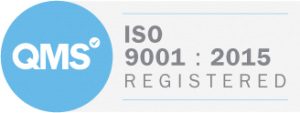
(S)EIS and employee share schemes
The Enterprise Investment Scheme (EIS) was introduced to encourage investment in small-medium sized private companies. Under the scheme, certain tax reliefs are available for individuals making investments that carry a higher degree of risk than, say, an investment in a fully listed company.
RM2 do not directly advise on EIS and SEIS, however we do have a great deal of experience in implementing employee share plans that are required to run alongside the investment schemes. In such instances, we understand the importance of maintaining EIS eligibility and ensuring any available tax relief is not scuppered for individual investors.
The Seed Enterprise Investment Scheme (SEIS) works in a broadly similar way and is designed to help smaller, or start-up firms, raise equity finance.
The Rules
The qualifying conditions for a company to raise money under the (S)EIS, for an individual to participate, and relating to the shares, are summarised in brief below. In most instances, even if these conditions are met, there also cannot be any arrangement in place to deviate from them at the time the shares are issued. In addition, certain conditions will apply on a continuous basis.
It is important that establishing an employee share plan does not create a scenario where any of these rules are broken.
The qualifying conditions are complex and you should always take professional advice. However, the following points are relevant for the company:
- Must not be quoted on a recognised exchange when the shares are issued. For (S)EIS purposes, the Alternative Investment Market (AIM) is not considered as a recognised exchange.
- Must be independent, that is, not under the control of any other company. In certain circumstances, where a holding company is introduced above the EIS company, the tax reliefs may be transferred to the new company shares.
- Must have fewer than 250 full-time employees, or 25 in the case of SEIS.
- All subsidiaries must be qualifying subsidiaries – i.e. under the ultimate control of the EIS company.
- For EIS, the gross assets of the company, or the group of companies, must not exceed more than £15 million when shares are issued. They must not exceed £16 million immediately after the EIS investment. For SEIS it must have no more than £200,000 in gross assets.
- In the case of SEIS, any trade being carried on by the company at the date of issue of the relevant shares, must be less than 2 years old at that date.
- The company, or a subsidiary company, must be carrying on a qualifying trade. If the trade is carried on by a subsidiary company, it must be at least a 90% subsidiary. Some examples of excluded trading activities include banking, insurance, property development, and operating or managing hotels.
For an individual investor:
- Must not have a material interest in the company (30%)
- Connected persons (e.g. a spouse or relations) cannot have interests in the EIS company.
- Cannot have any form of controlling interest in the company, for example as outlined in a shareholders’ agreement.
Shares must not be any form of preferential shares, aside from preferential rights to dividends, in certain circumstances.
Many of the rules surrounding eligibility for the highly popular Enterprise Management Incentive (EMI) share option plan mirror those of (S)EIS arrangements.
To find out more about the types of share scheme that can be implemented alongside (S)EIS, please call us on 020 8949 5522.


